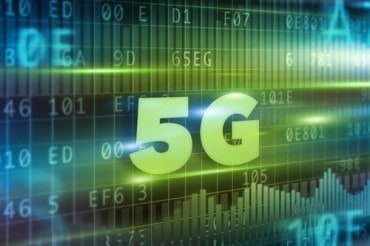
IoT’s ability to deliver cost savings is one of the biggest drivers for deployment in the sector, according to global mobile satellite company Inmarsat.
Global energy businesses are regularly investing in IoT technologies to improve their operations and hone business strategies with the goal of minimizing expenditures and growing profits. In fact, IoT’s ability to deliver cost savings is one of the biggest drivers for deployment in the sector, according to Inmarsat, a global mobile satellite company that recently conducted serious research about the subject.
Market research specialist Vanson Bourne at Inmarsat interviewed 100 energy companies from around the globe as part of Inmarsat’s “The Future of IoT in Enterprise” report. The research discovered that 47 percent of energy businesses said that identifying cost-saving opportunities was one of their biggest priorities for the deployment of IoT, ahead of other motivators, such as increasing automation (37 percent) and improving health and safety (37 percent).
Furthermore, energy businesses shared that the largest benefit they expect to see from the deployment of IoT is increased workforce productivity (48 percent), which shed more light on the vital role that IoT can play in improving the profitability of operations within the energy sector.
“The energy industry is at a fundamental crossroads. The volatility in the price of oil and rapid adoption of electric cars and renewable technology is just a couple of the factors putting serious pressure on some energy businesses’ margins,” said Gary Bray, Director of Energy at Inmarsat Enterprise.
IoT boosting margins in energy
Bray went on to explain, “Rather than energy businesses extracting as much fuel as possible, we are increasingly seeing a focus on profitable volume, which can be extracted and distributed at the lowest possible cost to boost margins and improve profitability. It is no surprise therefore that oil and gas producers are looking to the technologies of digital transformation to help them reduce these extraction, distribution and operational costs. Rapid digitalization of the sector will create an ‘Internet of Energy’ network that incorporates interconnected, intelligent measuring and monitoring systems with real-time visualizations of consumer usage data. This can be integrated into automation systems that instantly adapt to fluctuations in availability or demand and enable predictive maintenance of assets that will extend their lifespan, maximize resources and minimize wastage”
According to Bray, IoT is the key to unlocking large cost savings for the energy sector. Yet, for energy companies to access the full benefits of IoT, they must have reliable communication networks that can collect data from remote, hostile environments and send it back to control centers for analysis. Utilizing satellite connectivity to collect vital data could optimize their operations and lower their costs across the chain of upstream activities.
Satellite communication networks are designed to handle critical communications, and Inmarsat’s L-band satellite communication network is capable of delivering truly global connectivity to any location and collecting massive volumes of data with 99.9% uptime, which would allow energy companies to optimize their operations and concentrate on continued innovation.





























